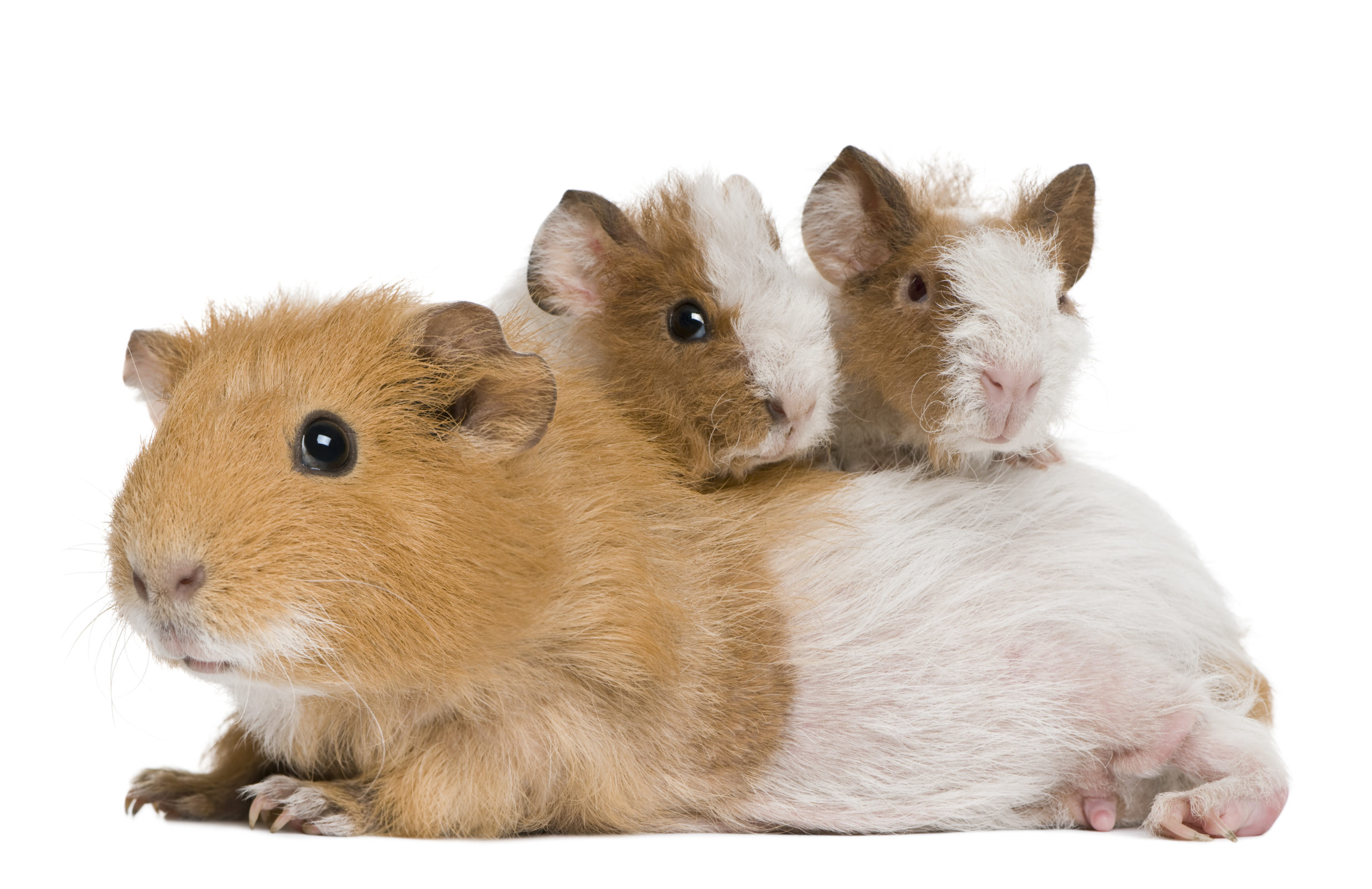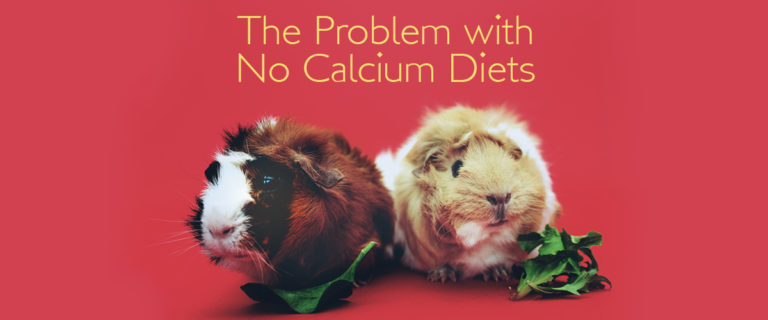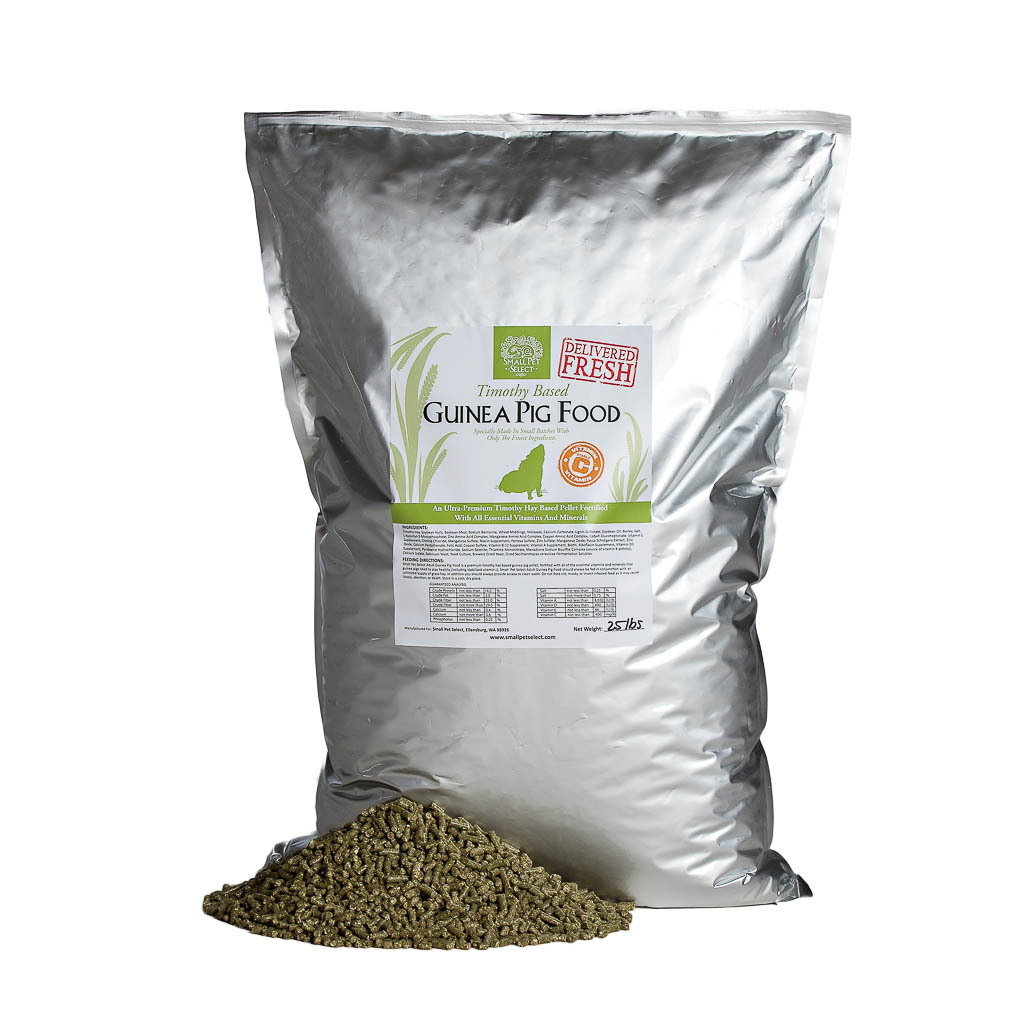Oh, calcium. So misunderstood. While we know that guinea pig diets too high in calcium can lead to bladder stones, the trendy low-calcium menus have proven that too little calcium can cause bone and dental problems. Guinea pigs that don't get enough calcium can leech it from their bones, threatening bladder stone formation regardless. Not fair. So, what’s a cavy parent to do?
P.S. (Fun fact, while chickens don't have teeth, if they're not given enough calcium, they'll also get bone problems; their bodies will pull it from where they can. So, not only important is guinea pig calcium important, but chicken calcium is, too!)
Calcium Deficiency is a Thing
Monitoring calcium intake isn’t a one-size-fits-all ordeal. Baby guinea pigs and pregnant mamas need extra calcium, for example. Pregnant guinea pigs are particularly susceptible to calcium deficiency, as it’s key to fetal skeleton development.
Symptoms of calcium deficiency include:
- Loss of appetite
- Muscle spasms
- Lethargy
Over time, not enough calcium can lead to brittle bones and teeth. A sudden reduction in calcium can cause the body to freak out a little and draw that calcium out of the bones, too. This can inadvertently cause bladder sludge and even stones.
Hind leg paralysis is another relatively common side effect of calcium deficiency. That being said, calcium-related hind leg paralysis in guinea pigs isn't always related to diet. Pregnant and nursing sows are most at risk, but any guinea pig can be a victim. Even healthy piggies fed an ideal diet experience this phenomenon. The guinea pig usually behaves normally otherwise, relatively unbothered by the inconvenience.
Unfortunately, there's no easy way for this to be diagnosed. Blood test results may not raise a red flag, because there is a wide range of “normal” calcium levels among cavies. If the vet can't find any other explanation for the paralysis (injury, stroke, scurvy, etc.), it's worthwhile to try treating with calcium. In most cases, 1 ml (~30 mg) of liquid calcium twice daily for 2 or 3 days does the trick. You can continue to give the guinea pig half the dose until they are fully recovered, which usually takes no more than a few days. These pigs may need a little more calcium in their diets than the average adult.
Age Matters
Guinea pigs under six months old need more calcium than adults; they’re growing most rapidly during this stage and need to build strong bones. Extra calcium in the form of alfalfa and veggies like spinach, parsley, and kale is a good thing for baby guinea pigs. You may want to feed separately from adult cagemates, however.

The risk of bladder stones in guinea pigs increases dramatically after 12 months old. This is because guinea pigs absorb more calcium from their food than humans do – around 50% on average. All that calcium that doesn’t get absorbed filters through the kidneys and bladder to (ideally) be excreted in the urine. Older guinea pigs don’t absorb calcium quite as effectively as the youngsters, so a balanced diet becomes extra important. Excess calcium can hang out in the bladder and bond with other minerals to form stones.
It’s Not All About You, Calcium
If only it were that easy, right? Vitamin D (sunlight!), magnesium, and potassium help the body absorb calcium. Phosphorus and calcium are the dynamic duo. Phosphorus needs calcium. If there isn’t enough calcium for the phosphorus to attach to, sometimes calcium can leach from the bones – yep, that again. More phosphorus than calcium in the body can also lead to magnesium deficiency. Yikes!
The ideal ratio of calcium to phosphorus in a guinea pig’s diet is around 1.33. While legumes (like alfalfa and clover) have a ratio of greater than 4:1, grass hays are closer to 1.5:1. Guinea pig pellets should be Timothy hay based for this reason, too. This means if you’re feeding foods with less calcium than phosphorus (like carrots, cucumber, sweet potato, and romaine lettuce) you need to also feed foods with the inverse ratio to balance things out (like cilantro, chard, kale, green/red leaf lettuce, celery, and okra). This can reduce the chances of stones developing and may even be beneficial for overall kidney health.
To find the Ca:P ratio of a certain food, divide the calcium amount by the phosphorus level. For example, 40 grams of pumpkin has 8 mg of calcium and 17 mg of phosphorus, so has a Ca:P ratio around 0.5:1 (8 divided by 17). If you’re feeding multiple foods, add all the calcium numbers up, then add the phosphorus numbers, and finally divide both by the total number of foods. Make sure you’re calculating ratios based on equal quantities (weight or calories).
Example:
1. Kale – Ca:P ratio of 2.4:1
2. Cilantro – Ca:P ratio of 1.4:1
3. Cucumber – Ca:P ratio of 0.7:1
4. Red bell pepper: Ca:P ratio of 0.5:1
Total calcium (5) divided by number of foods (4) = 1.25
Total phosphorus (4) divided by number of foods (4) = 1
Ca:P ratio for this piggie platter is 1.25:1… pretty good!
Guinea Lynx takes the guesswork out of balancing calcium and phosphorus with a handy calculator; just enter weight in grams and generate a calcium-to-phosphorus ratio for a day’s worth of foods.
Finding Balance
There are a lot of charts, lists, and diet plans out there, but the secret recipe for a healthy diet is all about balance and moderation. There are no “good” or “bad” vegetables. Fresh foods just have different levels of nutrients, like calcium, that guinea pigs may need in larger or smaller amounts at various life stages. You don’t need to become a chemist or mathematician to whip up your guinea pig’s daily salad, but it helps to know what you’re working with at the supermarket.
Foods high in calcium include spinach, parsley, arugula, dandelion greens, turnip greens, kale, and dill. Great choices for growing babies! Tomatoes, cucumber, carrot, bell peppers, and radicchio are low-calcium options that can make a regular appearance on the grown-up menu. Remember to look at phosphorus content of what you feed as well, making sure to aim for slightly more calcium than phosphorus overall.






